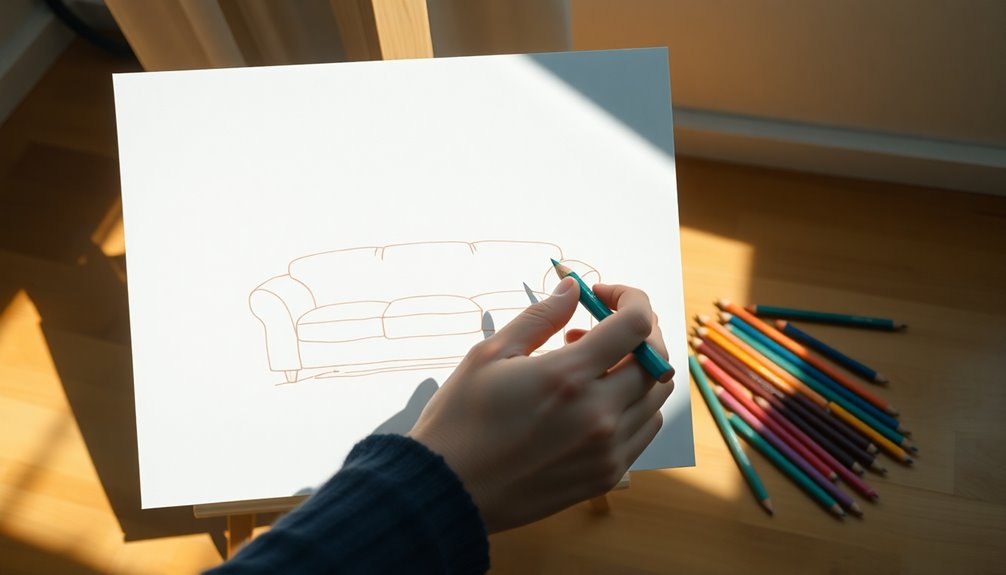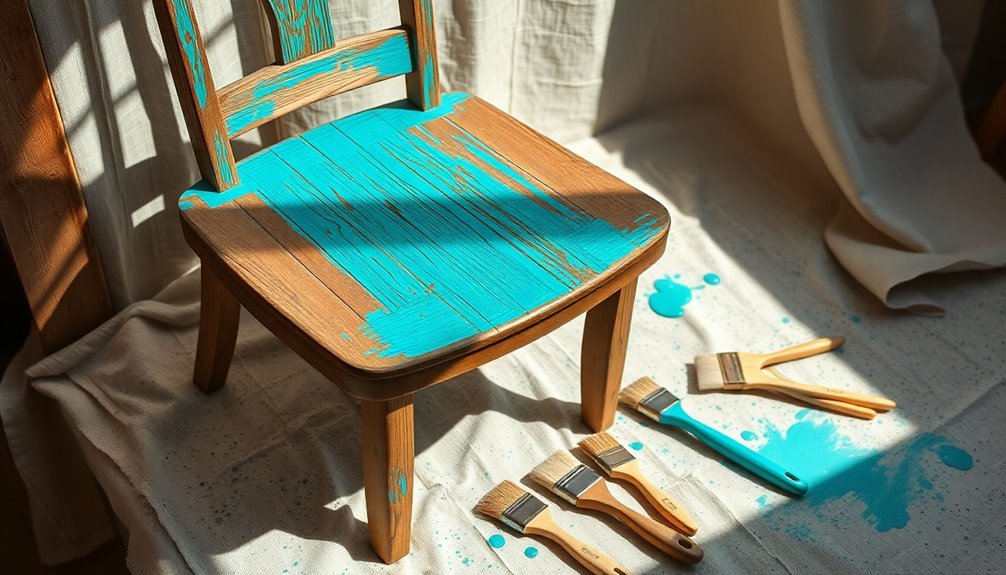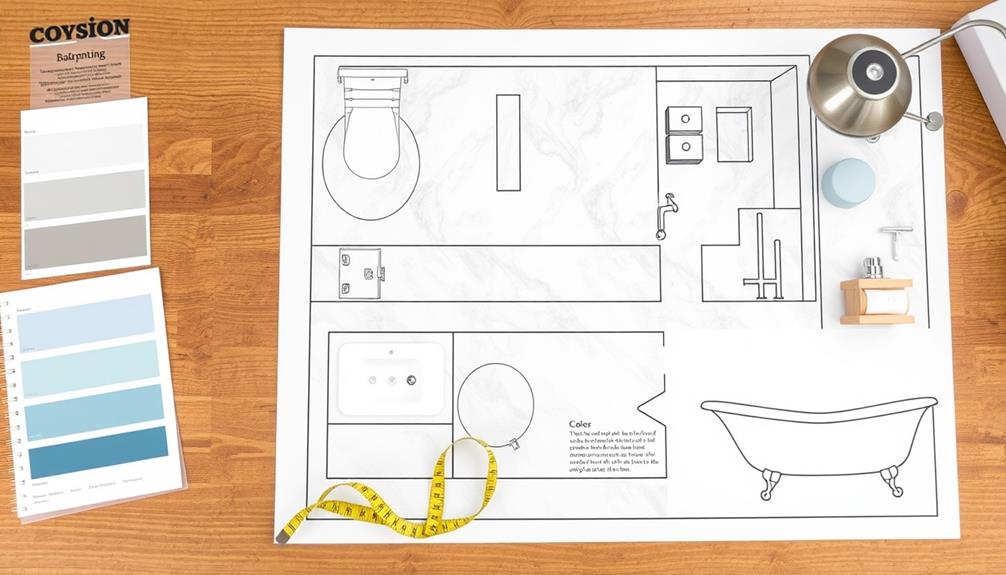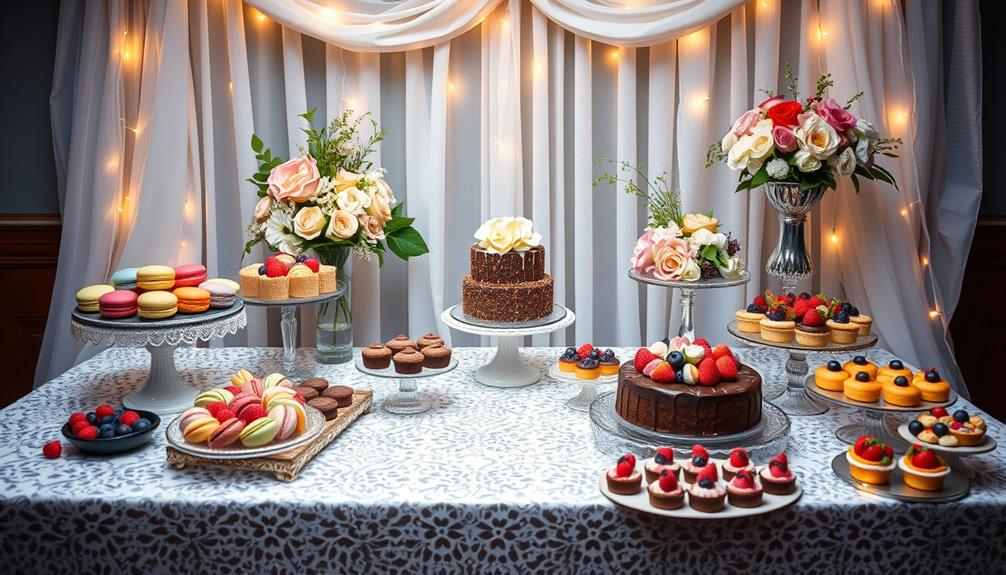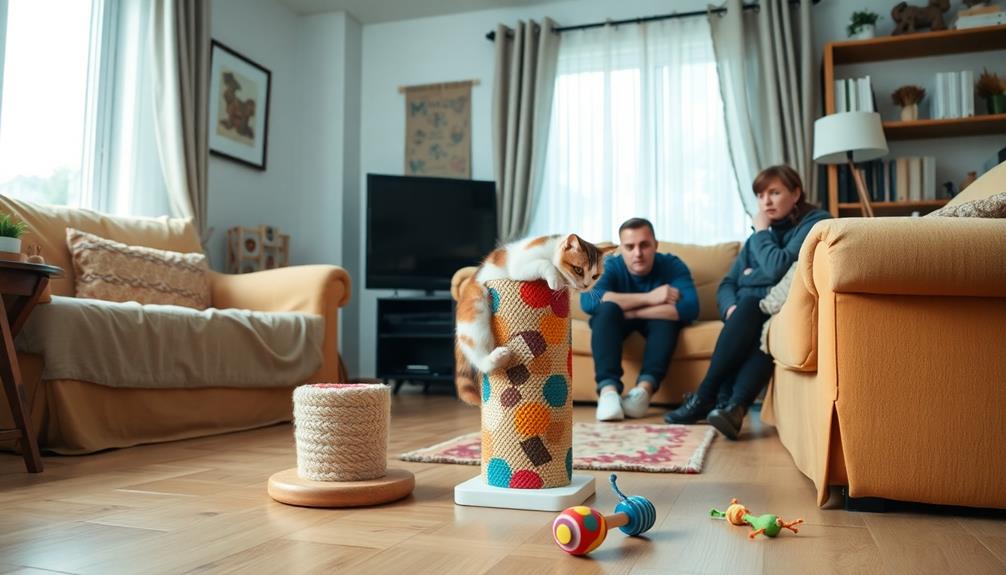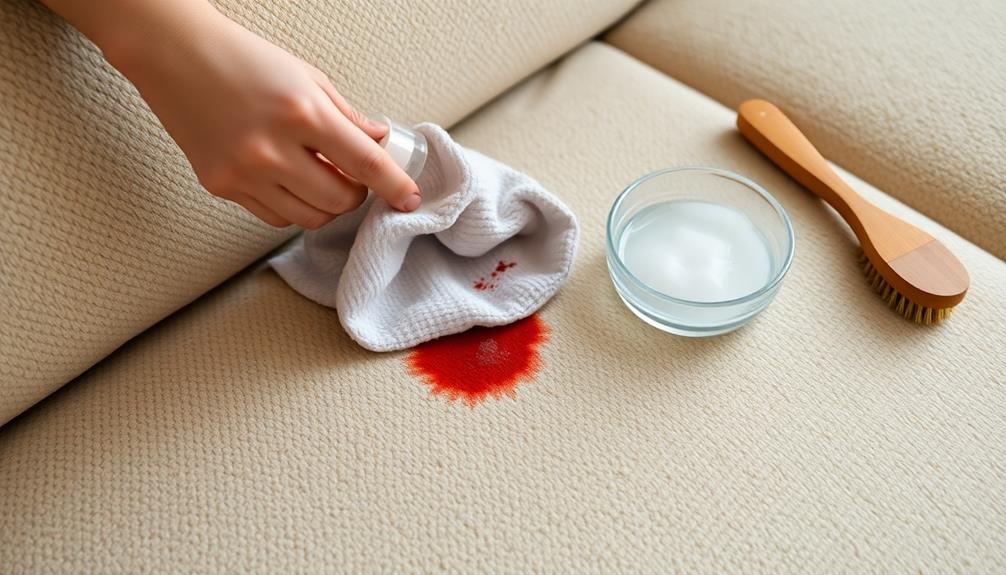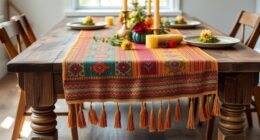To draw a sofa easily, start with basic shapes. Begin by sketching a rectangle for the seat and two smaller rectangles for the arms. Add another rectangle for the backrest, ensuring it aligns with the seat. Round the corners for a softer look, and detail the cushions by adding subtle lines. Don't forget to include legs; simple triangles or small rectangles work well. Enhance your drawing by adding texture to the fabric and some shading for depth. With these tips, you'll create a cozy-looking sofa in no time. There's more to explore for even better techniques!
Key Takeaways
- Start with a simple rectangular shape for the sofa's main body, ensuring proportions are balanced and visually appealing.
- Add two smaller rectangles on top for the backrest and armrests, adjusting their height for a realistic look.
- Sketch the cushions by drawing rounded shapes on the top and front of the sofa, giving it a soft, comfortable appearance.
- Include legs by drawing small rectangles or tapered shapes underneath the sofa to elevate it off the ground.
- Finish with details like stitching, patterns, or fabric texture to enhance the sofa's design and make it more lifelike.
Introduction
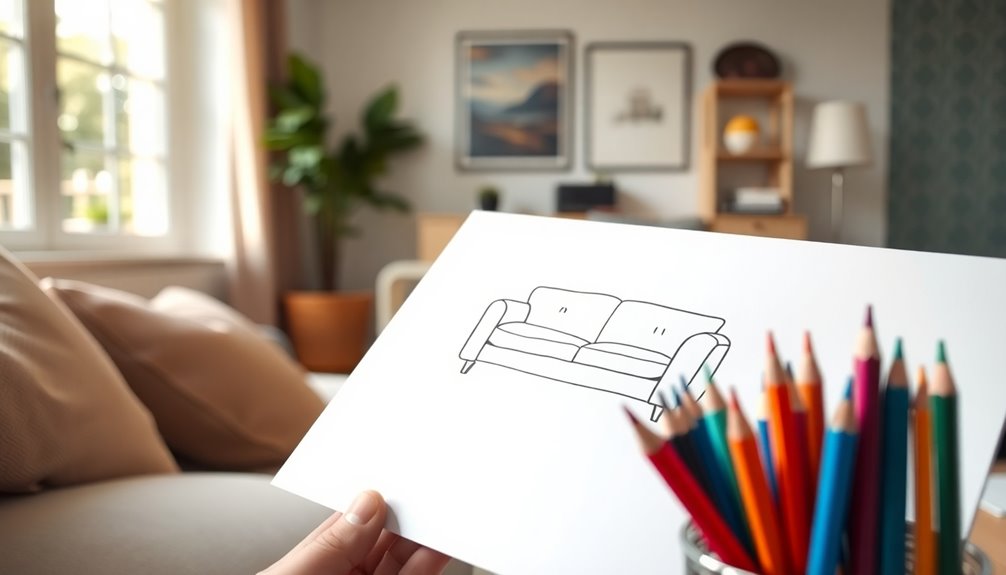
When you think about drawing a sofa, it's not just about the shapes; it's also about how to keep it looking great. You'll want to consider routine dusting and vacuuming, along with fabric-specific cleaning techniques. Plus, knowing how to tackle those pesky wine and coffee stains can really elevate your drawing to a whole new level.
Routine Dusting and Vacuuming
To keep your sofa looking fresh and inviting, incorporating a routine of dusting and vacuuming is crucial. Regular dusting helps maintain a clean and dust-free environment, reducing allergens and improving indoor air quality. Aim to dust surfaces at least once a week, using a microfiber cloth to effectively capture dust particles.
When it comes to vacuuming, do it at least once a week on carpets and rugs, with more frequent cleaning in high-traffic areas to prevent dirt buildup. For your sofa, using a vacuum with an upholstery attachment is highly effective. This will help remove dust and debris from fabric surfaces and those hard-to-reach crevices.
Fabric-Specific Cleaning Techniques
How do you keep your sofa looking its best? It all starts with understanding the fabric your sofa is made of. Different materials require unique cleaning methods. For instance, microfiber can be cleaned using a simple solution of water and mild soap. On the other hand, leather needs a specialized cleaner to avoid any damage. Always check the manufacturer's label for cleaning codes like W, S, WS, or X, as these will guide you to the right cleaning solution.
If your sofa features natural fibers like cotton or linen, regular vacuuming is essential. Spot clean any stains with a damp cloth to maintain cleanliness. For synthetic fabrics like polyester and nylon, which are more stain-resistant, a mixture of water and vinegar can work wonders for effective stain removal.
Lastly, don't underestimate the value of professional cleaning. Scheduling regular cleanings can significantly extend the life of your sofa, particularly for delicate fabrics that might not handle home cleaning methods well. By following these fabric-specific techniques, you'll keep your sofa not just clean but also looking fantastic for years to come.
Tackling Wine and Coffee Stains
Wine and coffee stains can be a real headache, especially when they land on your beloved sofa. But don't worry; you can tackle these pesky stains with some quick action. First, grab a clean cloth and blot the area immediately to absorb excess liquid. The sooner you act, the better your chances are of removing the stain.
For wine stains, mix dish soap, white vinegar, and water. Apply this solution to the stain and gently blot until you see it lift. For coffee stains, use cold water mixed with a small amount of laundry detergent. Let it sit for a few minutes before blotting it up as well.
After treating either stain, it's crucial to rinse the area with cold water to eliminate any residue from your cleaning agents. If the stains still linger, you might want to consider a commercial upholstery cleaner designed for your sofa's fabric type. Just be sure to follow the manufacturer's instructions for the best results. By acting quickly and using the right techniques, you can keep your sofa looking fresh and clean, no matter what spills happen.
Avoiding Direct Sunlight
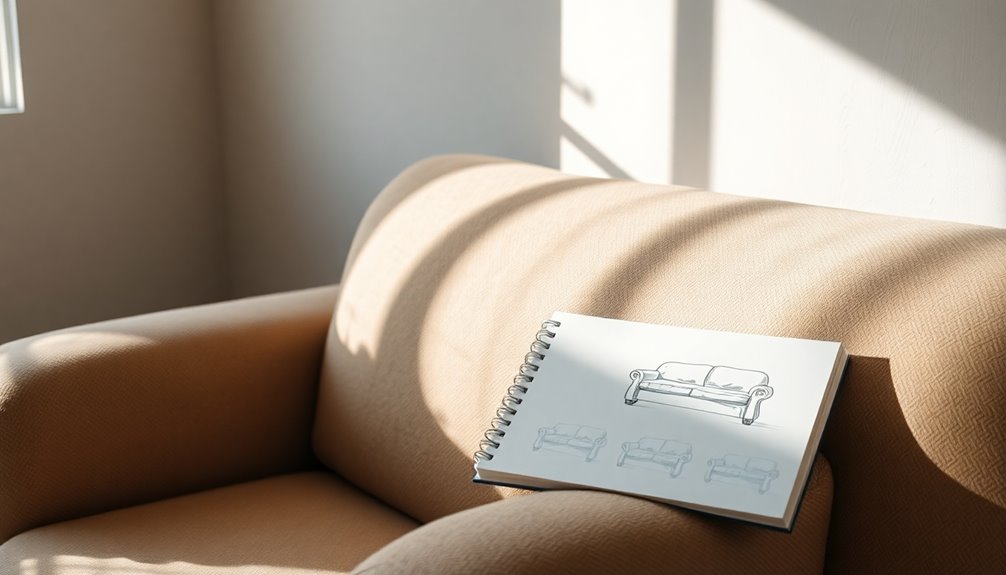
When you're drawing a sofa, avoiding direct sunlight is key to maintaining the integrity of your work. Harsh light can distort colors and make it tough to see details, so consider using protective layers or shading techniques in your drawing setup. By creating a controlled environment, you can better focus on selecting scratch-resistant fabrics and utilizing coasters and trivets effectively.
Scratch-Resistant Fabric Selection
Choosing the right scratch-resistant fabric for your sofa is essential for maintaining its appearance and longevity. Opt for materials like microfibers or tightly woven synthetic fibers, as these can withstand wear and tear much better than other options. When selecting your fabric, keep in mind the placement of your sofa—it's crucial to avoid direct sunlight. UV rays can fade and weaken fabric fibers over time, reducing their durability.
To combat this, look for fabrics treated with UV-resistant finishes. These treatments can help maintain the color and integrity of the fabric, even in bright rooms. Additionally, regularly rotating and rearranging cushions can distribute wear evenly, prolonging the fabric's lifespan and scratch resistance.
Don't overlook the cleaning and maintenance requirements of your chosen fabric. Some materials may require special care to keep their scratch-resistant properties intact. In summary, prioritizing the right fabric, considering its placement, and understanding maintenance will ensure your sofa remains stylish and resilient against scratches for years to come.
Protective Fabric Layers
To keep your sofa looking its best, incorporating protective fabric layers is a smart strategy. Direct sunlight can fade and damage your sofa over time, but using fabrics with UV protection, like solution-dyed acrylic or polyester, can help maintain its color and texture. These materials are specifically designed to withstand sunlight exposure, ensuring your sofa remains vibrant longer.
Consider adding window treatments, such as sheer curtains or blinds, to block harmful UV rays from reaching your sofa. This simple addition creates a buffer against sun damage and can significantly extend your sofa's lifespan.
Regularly rotating your cushions is another effective tactic. By doing this, you distribute sun exposure evenly, preventing uneven fading and keeping your sofa looking uniform.
Lastly, applying a fabric protector spray can enhance your sofa's resistance to UV damage. This not only helps protect its appearance but also makes cleaning and maintenance much easier. By taking these steps, you'll ensure your sofa stays stunning and lasts for years to come.
Using Coasters and Trivets
Coasters and trivets are essential tools for preserving your sofa's beauty and functionality. By placing coasters under your drinks, you can prevent water rings and stains that arise from condensation, which helps keep your sofa's finish intact. Similarly, trivets are perfect for hot dishes, protecting your furniture from heat damage and scratches that can occur from placing hot pots and pans directly on the surface.
It's also important to consider the impact of sunlight on your sofa. By strategically placing coasters and trivets in areas that receive direct sunlight, you can mitigate fading and discoloration over time. This simple step can significantly extend the life of your sofa, ensuring it remains vibrant and comfortable for years to come. Additionally, using protective items like coasters and trivets can enhance the aesthetic appeal of your space, much like how Indonesian decor masks represent rich cultural heritage, blending functionality with artistic expression.
Regularly using these protective items not only maintains your sofa's appearance but also enhances its functionality, making it a welcoming space for family and friends. So, make it a habit to reach for coasters and trivets whenever you enjoy a meal or a drink on your sofa. Your furniture will thank you for it, and you'll enjoy its beauty and comfort for a longer time.
Cushion Replacement Strategies
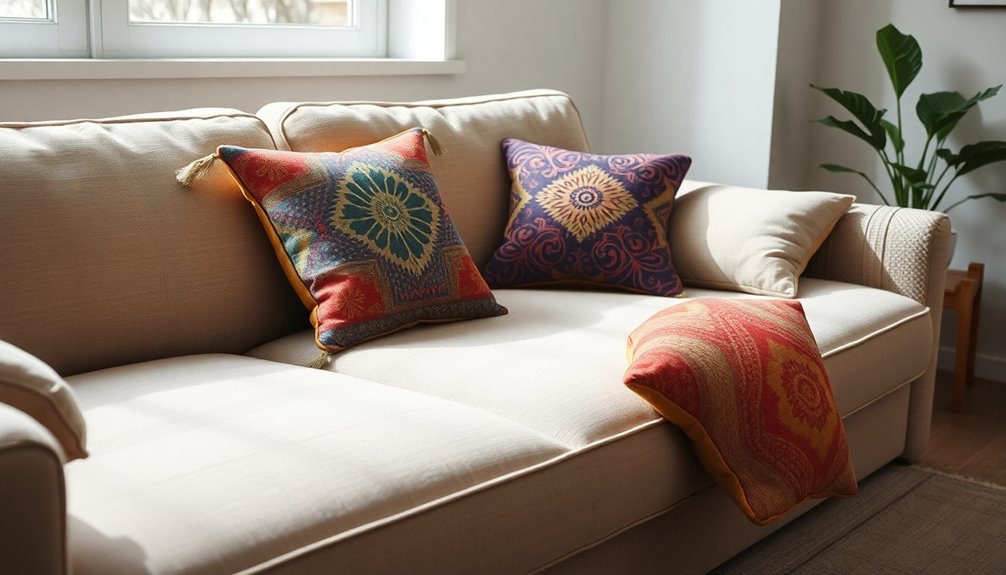
When you're thinking about replacing your sofa cushions, it's crucial to consider the integrity of the frame to ensure it supports the new cushions well. You might also want to explore leather repair techniques if your sofa's upholstery shows wear. Finally, don't overlook cushion fluffing techniques to keep your seating comfortable and looking fresh.
Frame Integrity Concerns
Assessing the integrity of your sofa's frame is crucial before diving into cushion replacement. A weak or damaged frame can compromise the overall support and comfort of your seating. So, take a close look at the frame for any signs of structural damage. If you notice any issues, consider reinforcing the frame with corner blocks or brackets. This added support is especially important if your sofa sees a lot of use or shows signs of wear.
When replacing cushions, opt for high-density foam. This material not only provides better support but also maintains its shape over time, enhancing your sofa's comfort. If your sofa has attached cushions, ensure your replacement method allows for easy removal and cleaning. This will help you maintain hygiene and prolong the life of your cushions.
Regular inspections of both the frame and cushions are key. By identifying potential issues early, you can make timely repairs that prevent further damage, keeping your sofa in great shape for years to come. Remember, a sturdy frame supports the entire piece, so addressing integrity concerns is essential for a successful cushion replacement.
Leather Repair Techniques
Replacing leather cushions can significantly refresh your sofa's appearance and comfort. When you choose to replace the cushions, make sure you select high-quality leather that matches the original material in both texture and color. This ensures a seamless look that preserves your sofa's aesthetic.
Before you start, clean the area thoroughly with a leather cleaner. This step removes any dirt or oils that could affect adhesion or appearance. Once the area is clean, you can proceed with the replacement. Use a staple gun or upholstery tacks to securely attach the new cushion to the frame, ensuring it stays in place during use.
For added comfort, consider adding a layer of foam or batting inside the cushion cover before sealing it. This extra layer provides support and softness that can enhance your seating experience.
Lastly, always follow the manufacturer's guidelines for care and maintenance of leather. Proper care will help prolong the life of your newly replaced cushions, keeping your sofa looking and feeling great for years to come. With these techniques, you'll have a refreshed sofa that meets both your style and comfort needs.
Cushion Fluffing Techniques
Cushion fluffing is essential for maintaining both the comfort and appearance of your sofa. To keep your cushions looking their best, regularly plump them by hand. This simple act redistributes the stuffing and helps maintain their shape, enhancing comfort. Dust and debris can accumulate over time, so consider using a vacuum cleaner with an upholstery attachment to rejuvenate your cushions' look and feel.
If your cushions start to lose their support, it might be time to replace the stuffing. Opt for high-quality materials like memory foam or polyester fiberfill, as they provide improved support and longevity. Additionally, periodically remove the cushion covers and wash them according to the manufacturer's instructions to keep everything fresh and extend their lifespan.
For a quick refresh without a full replacement, try adding a layer of polyester batting or foam to your existing cushions. This extra layer improves softness and comfort and gives your sofa a renewed feel. By following these cushion fluffing techniques, you'll ensure your sofa remains a cozy and inviting centerpiece in your living space.
Upholstery Fabric Swaps
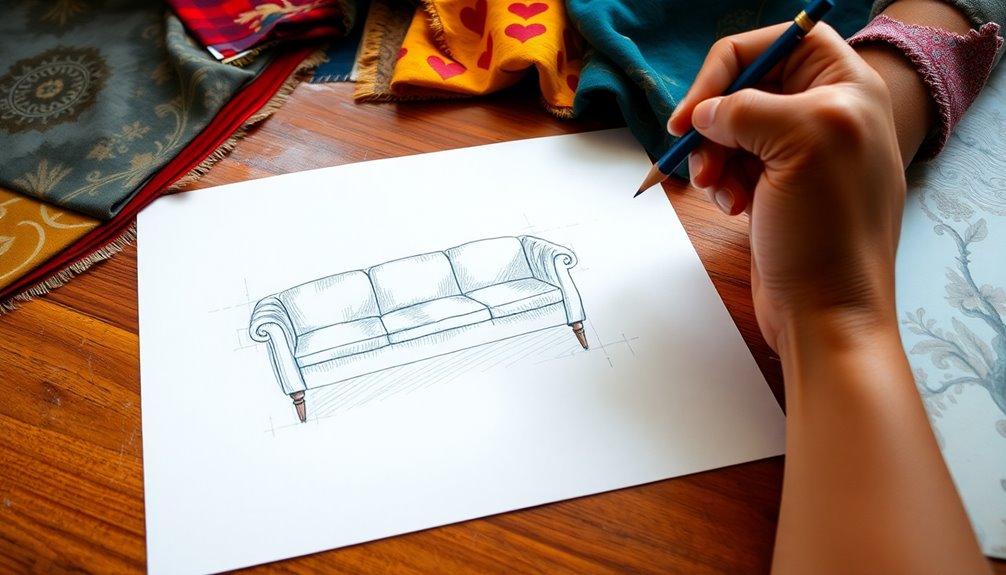
Upholstery fabric swaps offer an exciting way to breathe new life into your sofa without breaking the bank. By changing the fabric, you can quickly and cost-effectively update your home decor without the need for new furniture. Different fabric types like cotton, linen, and polyester blends can dramatically alter your sofa's texture and durability. Each material has its own benefits when it comes to wear and care, so think about what suits your lifestyle best.
Patterns and colors are crucial in your fabric selection. Bold prints can transform your sofa into a statement piece, while neutral tones provide versatility and longevity, making it easier to style your space. Don't forget to consider the cleaning requirements of the fabric. Some materials may need specialized care, while others can be maintained with simple home cleaning methods.
Engaging in upholstery fabric swaps not only refreshes your space but also promotes sustainability. You're repurposing existing furniture, reducing waste, and making eco-friendly choices in home decor. So, gather your fabric swatches, get creative, and enjoy the transformation of your beloved sofa!
Seasonal Fabric Rotation Tips
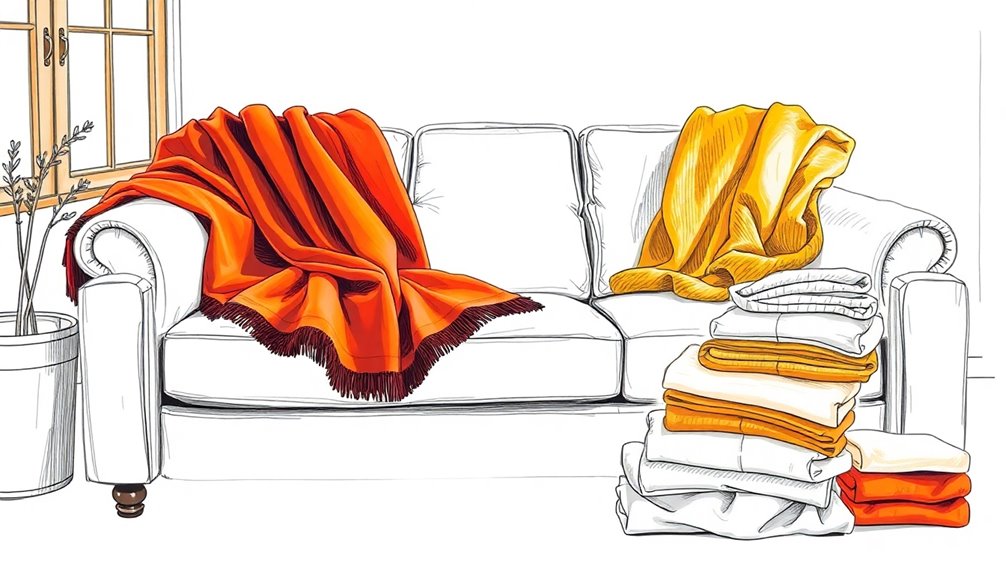
Switching up your sofa's fabric seasonally can make a significant difference in both comfort and style. For the summer months, opt for lighter, breathable materials like cotton or linen. These fabrics keep you cool and enhance your living space's airy feel. As winter approaches, cozy up with plush fabrics like velvet or wool, providing warmth and a snug atmosphere.
Using removable and washable slipcovers is a smart choice, allowing you to easily change between seasonal patterns and colors. This approach gives your sofa a fresh look without the expense of new furniture. Incorporate seasonal colors into your fabric choices; warm earthy tones work wonderfully in autumn, while bright pastels bring a lively vibe in spring.
When it's time to store off-season fabrics, make sure you clean them first. Keep them in a cool, dry place to prevent mold and damage. Don't forget to update your decorative pillows and throws alongside your fabric rotation. This small change can significantly enhance the overall look of your sofa, ensuring it stays stylish and inviting all year round.
Conclusion
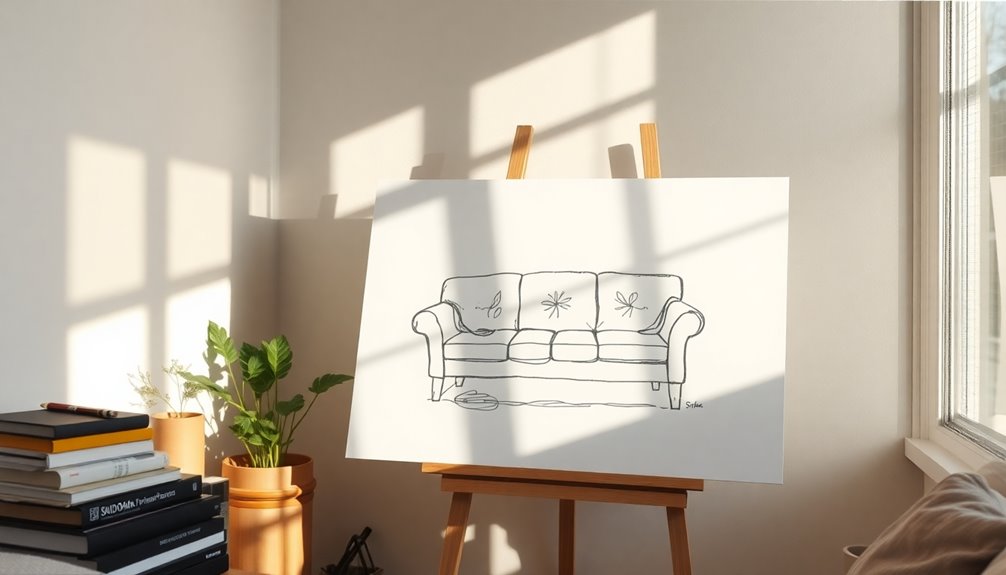
To wrap up your sofa drawing journey, focus on refining the shapes and adding those final details that truly enhance its overall appearance. Use darker lines over your initial sketch to give your drawing a polished look and make it stand out. This step is crucial for bringing your creation to life.
Once you've solidified the outlines, consider experimenting with colors and shading techniques. Adding depth and character to your sofa can elevate your artwork, making it more visually appealing. Don't shy away from using bold colors or soft pastels—mix and match until you find a combination that resonates with you.
After completing your drawing, share it with friends or post it in a community. Getting feedback can offer you valuable insights and encouragement, which can boost your confidence and inspire you to keep improving.
Frequently Asked Questions
How to Draw an Easy Sofa Step by Step?
To draw an easy sofa step by step, start by sketching a simple rectangle for the body. You'll want to keep it symmetrical for balance. Next, add smaller rectangles for the backrest and armrests, ensuring the proportions look inviting. Round the edges of the cushions and legs for a softer appearance. Use light pencil strokes for the outlines, then refine with details before darkening the lines. Finally, add shading and color for depth.
What Is the Easiest Object to Draw?
The easiest object to draw is often a simple geometric shape, like a circle or square. These basic forms lay the groundwork for more complex drawings. You might find everyday items, such as a cup or an apple, also easy to tackle due to their recognizable shapes. These objects have clear outlines and minimal details, making them perfect for beginners. By starting with these simple shapes, you'll build confidence and enjoy the drawing process more!
What Is the Difference Between a Couch and a Sofa?
You might think a couch and a sofa are the same, but there's a subtle difference. A sofa's usually more formal, designed for seating multiple people, while a couch feels more casual and relaxed. Traditionally, sofas have structured designs with arms and backs, while couches can be simpler, sometimes armless. Although the terms have blurred in modern usage, knowing this distinction can help you choose the right piece for your space.
How to Make a Sofa More Cozy?
To make your sofa more cozy, start by adding plush throw pillows in different sizes and textures. Drape a soft, warm throw blanket over the arm for extra warmth and visual appeal. Incorporate a variety of textures, like knitted or faux fur, to create an inviting atmosphere. Position your sofa in a well-lit area with soft lighting, and place a large area rug underneath to ground the space and enhance comfort. You can easily personalize your space by choosing throw pillows that reflect your style, whether that’s bold patterns or soothing neutrals. When it comes to how to drape a throw, try letting it cascade over one side of the sofa for a casual yet intentional look. Finally, consider adding a small side table next to the sofa, where you can place books or a cup of tea, making your cozy corner not only inviting but also functional.
